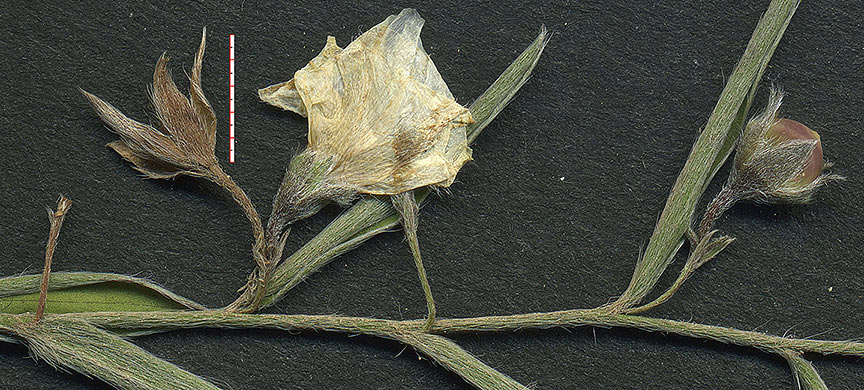
E. sericeus var. cymosus: cymes with long peduncles, 26 July 2014.
[Click on images for enlargement, especially to view details.]

E. sericeus var. cymosus: cymes with long peduncles, 26 July 2014.
[Click on images for enlargement, especially to view details.]
Stem maturity is clearly a factor in peduncle formation, although phenology and microenvironment can not be ruled out as contributing factors. Spring and summer surveys of 110 stems in the same area as those surveyed below (and including them) revealed that no plant with > 2 fls (including older flowers or fruits) had only short peduncles — a good index of maturity for determination of the long peduncle type. Further, a survey of all E. sericeus var. sericeus collections in TEX/LL found that no peduncles exceeded 1 mm.
Early flowers with long peduncles occur, but lateral cyme buds generally are not found.
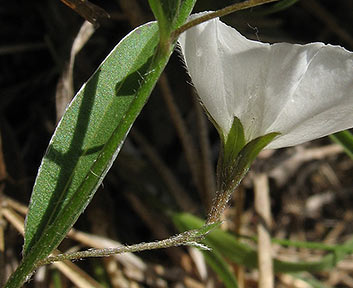
|
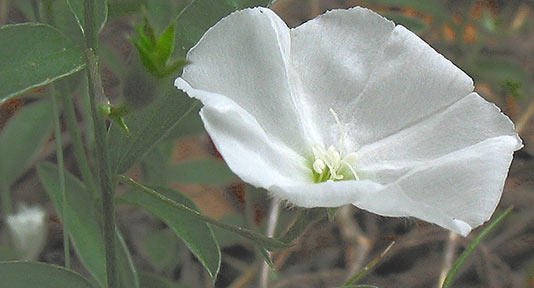
|
|---|---|
| 13 April 2011 | 14 April 2012 |
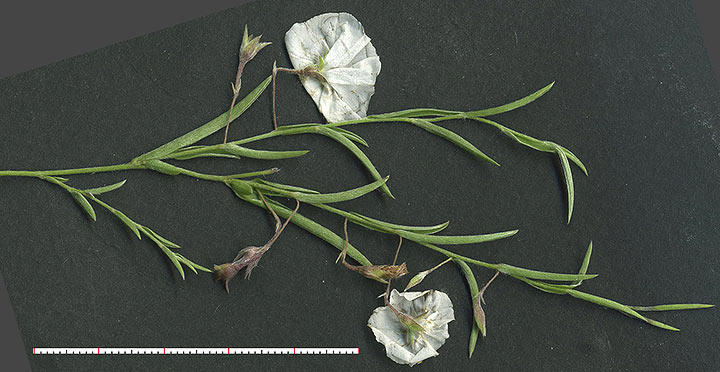
Illustrations of peduncle variation in late May showing a range from short peduncles less than 1 mm (bottom left) to long (> 15 mm; top left). On May 24 15 of 23 flowers surveyed had peduncles 0.2—2 mm. (Earlier forma pedunculatus van Ooststroom required a peduncle length of 3 mm.). A survey in a nearby area (several hundred feet distant) 5 days later found only 5 of 52 peduncles less than 3 mm.
A survey of 41 stems with 75 flowers in May 2014 found only 2 flowers with lateral cyme buds (shown on the right).
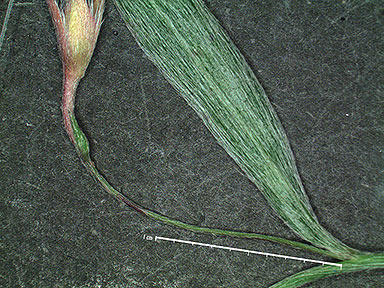
|
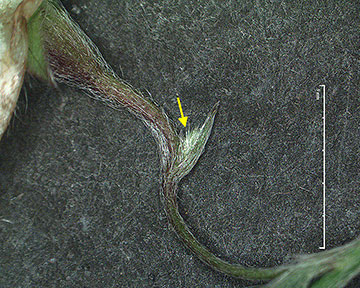
|
|---|---|
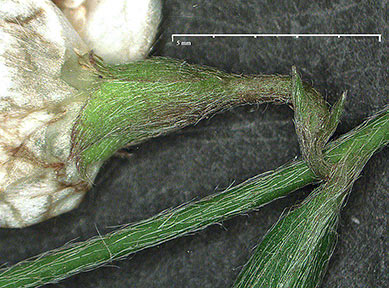
|
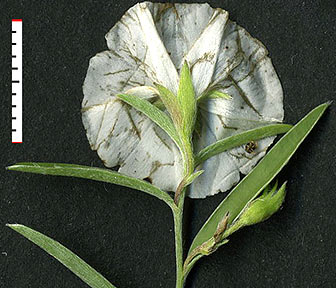
|
The notch at the base of the new bud on the right (red arrow) is where the first terminal flower with pedicel has disarticulated. The bud is thus on a lateral branch of the cyme and would have produced a second flower.
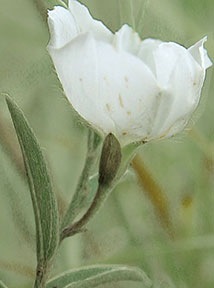
|
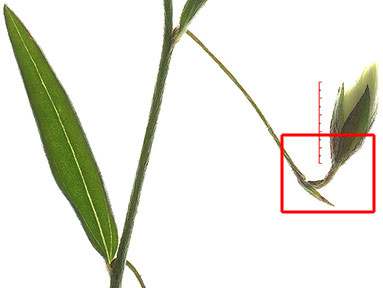
|
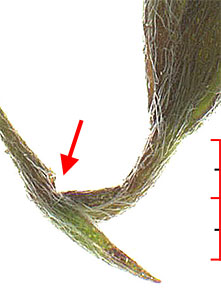
|
|---|---|---|
| Very short peduncle, 11 June 2010 | Apparent cyme (& detail) 7 June 2014 | |
Surveys were may on July 5, July 12 & July 26, in 3 separate but not distant areas with some overlap in the July 26 set, a total of 211 peduncles (not including those in bud). 20% were less than 3 mm, but only 1 was found in the July 12 set of 32. Roughly half of the peduncles surveyed were bare, the floral portion having disarticulated. 18 (ca. 9%) instances of flowers on a lateral branch (with or without the central flower having disarticulated) were found, a clear indication that the cyme structure had continued to develop during the summer. The rachis of a lateral flower is only rarely visible, so without careful examination, when the central flower has disarticulated (as with the June cyme above), the status of the second flower is easily misidentified as central.
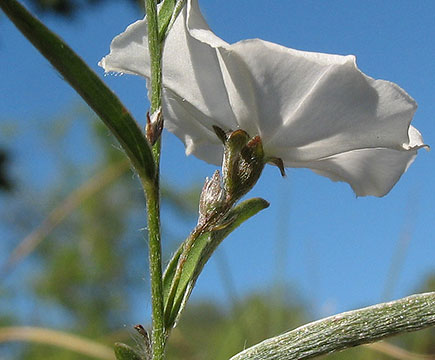
|
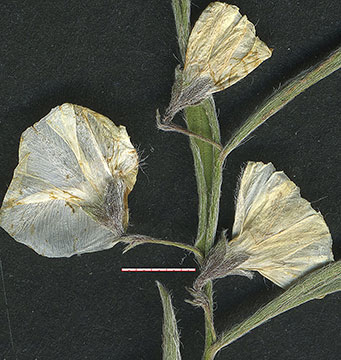
|
|---|---|
| Emerging lateral bud, July 27 | 3 central flowers; only bottom flower shows lateral bud developing |
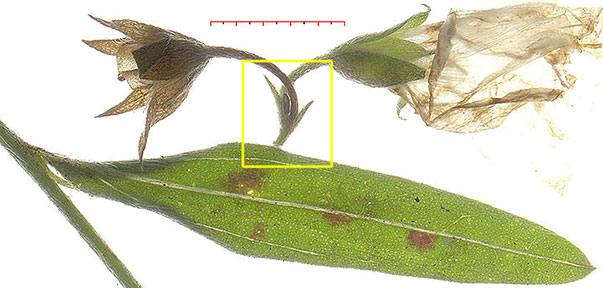
|
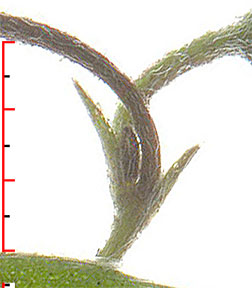
|
|---|---|
| 2-flower cyme (central flower dried), July 26, 2014 | |
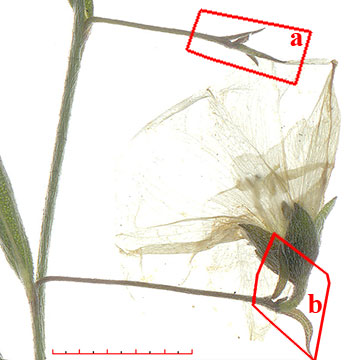
|
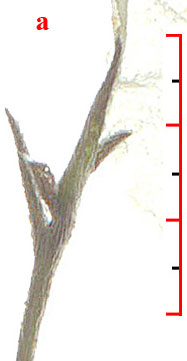
|
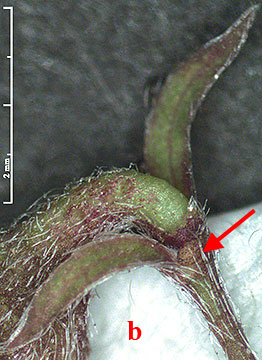
|
|---|---|---|
| 2-flower cymes determined by (a) bracteole pairs & (b) base of disarticulated central flower (arrow) and very short rachis of lateral flower, July 26, 2014 | ||
One rare instance of a third flower of a cyme with clearly visible rachides is shown below.
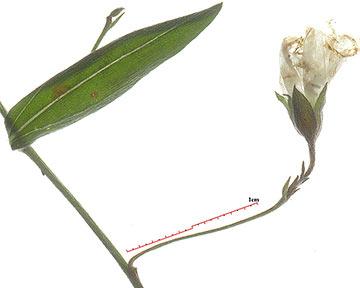
|
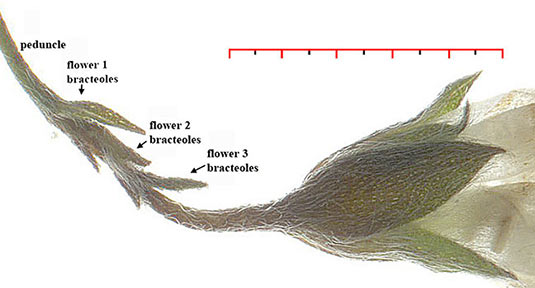
|
|---|---|
| 3-flower cyme (central flower and first lateral flower have disarticulated), July 12, 2014 | |